A note about the photos below: We’re building up a collection of photos on this page of the wildlife in the parish. Currently some are stock photos, some are bad photos, and some don’t yet have a photo! Please contact us if you have any photos, even if you don’t know what the bird or animal is, or there is already a photo of it here. We’ll gladly put them on this page with the proper credit given.
A note about the list in general: it’s intended to contain everything that it’s possible to see in the Parish, so if you see something that isn’t here, even just once, then please let us know via the contact form
Birds
Like many villages in South Norfolk, Alpington and Yelverton’s mix of quiet village life, numerous gardens, church yard, playing fields, and surrounding farmland, offer plenty of opportunities for birdwatching.
It’s probably fair to say that this is not the place to find anything rare (there are plenty of spectacular locations elsewhere in Norfolk to do that) but with the current trend towards “low carbon” birdwatching, we’d like you to know that there is plenty to see here on your doorstep!
Here is a list of birds that have been seen in and around the Parish of Alpington and Yelverton since January 2020. Grab some binoculars and see if you can help us make the list longer!
Garden birds
Robin
Find them pretty much anywhere in the village.
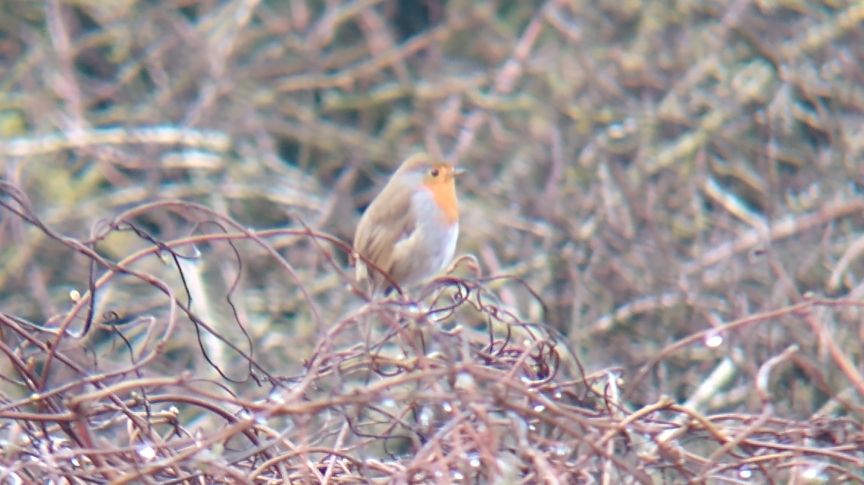
Wren
The UK’s most common bird, but shy, and often tricky to see and distinguish from other little brown birds.

Blue Tit
See these anywhere in the village, especially on feeders.

House Sparrow
These will nest in gaps in your roof. But there are groups of them landing round the village all year round. You’re very likely to see/hear them in the big hedge going round the corner at the entrance to Cherrywood.
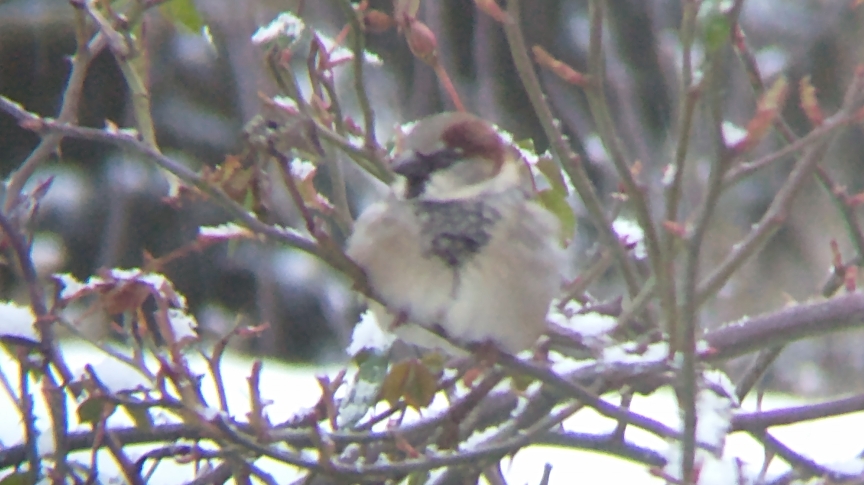
Starling
Quite common around Alpington and Yelverton, you’ll find them in flocks usually, sitting at the tops of trees or in fields, for example the fields around the farm to the east of the village. You’ll sometimes get them in our gardens and on bird feeders. If you see some blackbird sized black birds flying around close together in our villages then they’ll likely be starlings.


Great Tit
Common around the village, you can find them in hedges and trees, and visiting bird feeders.

Blackbird
Very common round the village, you can see these pretty much anywhere, and hear many of them singing loudly in the morning and evening.
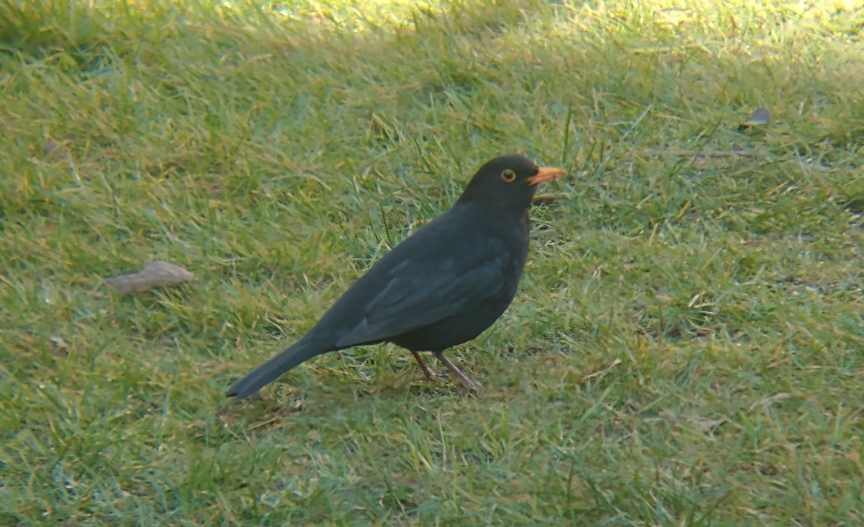
Song Thrush
The general consensus is that these used to be more common in the parish, but it is still possible to see them around. Probably most likely to be seen in spring as you can hear them more often. In spring if you walk in the evening around Garrick Field, the take the footpath west, then go either north or south, you should probably hear one at least. They are also common around Well Beck, right at the south of the parish.

Coal Tit
We do get these on bird feeders in the village, at least near Garrick field. But they don’t seem common. You’ll probably see one a couple of times a month if you’re lucky, and they don’t hang around very long.

Long-tailed Tit
These hang around in family groups, and you can often see them swarming a bird feeder or flying through wherever there’s a treeline or hedgerow. Try the trees around the children’s play area, or the hedges around Garrick Field or the church, or the road/path to Avenue Farm.
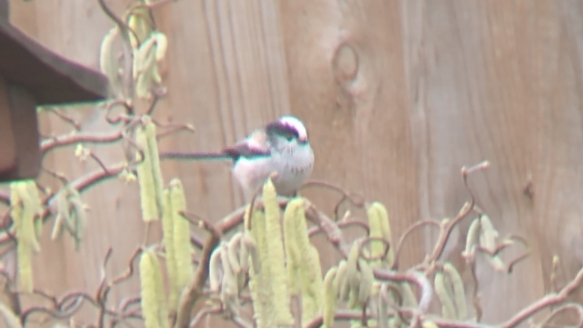
Chaffinch
If you pay attention you can usually spot one of these on your walk, but they aren’t as numerous round the parish as other birds. Pretty tricky to tell it’s a chaffinch without binoculars, but if you’re close enough it is just about possible to make out the buff pink chest and head markings. If one flies past, you might notice the clear flashes of white in the wings which is quite distinctive. The real giveaway is their song which is quite consistent and relatively easy to recognise. They are supposed to visit bird feeders but we’ve not seen that happening often locally.

Dunnock
Also sometimes called a hedge sparrow, very common here but tricky to tell at first glance from a house sparrow. These seem more often to be on the ground though, you’ll rarely see them on a bird feeder, they’ll be underneath getting the bits that have dropped, or scouting round the floor for insects.


Linnet
Not easy to find unless you’re really looking, they aren’t common but are lovely to see, with a beautiful song. We’ve seen them in spring in the fields next to the farm buildings on the footpath that goes north off Framingham Earl Road, through the newer houses. Also seen along the footpath northwest of Avenue Farm. Also seen once on the footpath that goes south along Well Beck and joins Dove Lane.


Goldcrest
One of the smallest birds in the UK but they aren’t impossible to spot due to their lovely yellow crest. We’ve seen them in the hedges along Back Road and Dranes Lane, and also in the treeline down the path from the church to Garrick Field.
Yellowhammer
Ok so we’ve not seen these in the parish yet, but just over the southern border, the other side of Well Beck, so we think it still counts!

Nuthatch
These have been seen on bird tables in Yelverton west of the pond. As far as we know they do not venture any further south.
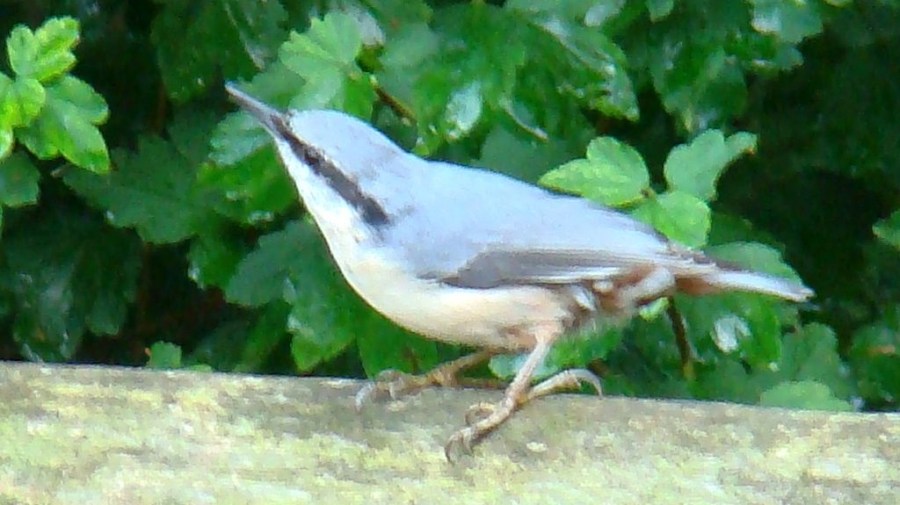
Goldfinch
Often seen in flocks on the trees round the edge of Garrick field and down the loke to the church, and also on church road close to the church. They are often quite noisy so you’ll know they are there. They should visit garden feeders, given the right seeds, but the goldfinches in our villages have always seemed a bit reluctant to do that.

Greenfinch
These are more common than you might think, you can sometimes see groups of 4 or 5 flying round together but not often. If you see a male greenfinch in the sunlight they are unmistakable as no other bird is all green like that, with beak that size. Like the goldfinches, they should visit your bird feeder if it’s got the right seeds in, but ours don’t seem to do it very often. We got lucky with the photo for this one.
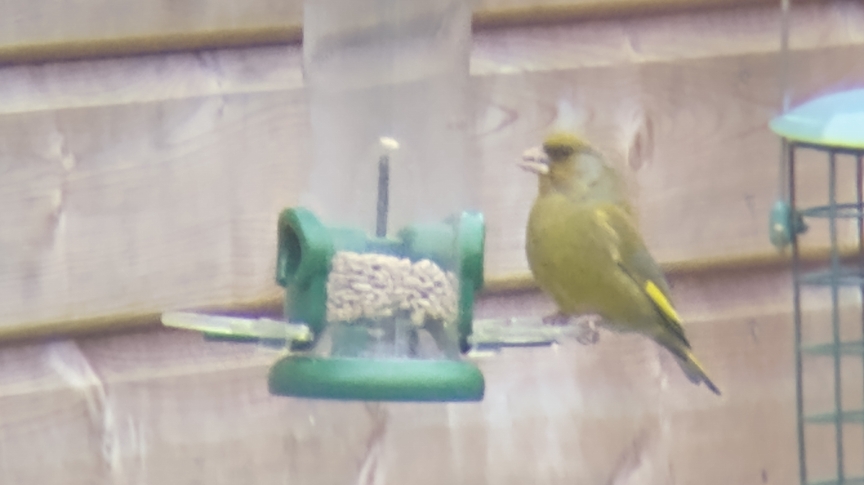
Wagtails and Pipits
White / Pied Wagtail
These turn up in Alpington and Yelverton all over the place, but not often and normally seen on their own. You might see one running down the road, on a rooftop, on farm buildings and sheds, or in fields, particularly to the east of the village past the farm buildings.

Grey Wagtail
We’ve only seen one of these, hanging around the pond. Going for a bath in the pond itself and then flying just over the barrier at the rear bank, to forage in the puddle there. We’re very lucky to have seen one as there’s only 38,000 pairs in the UK, they are relatively rare, compared to 500,000 pairs of pied wagtails for example.

More pictures on our post about the impact of the 2020 pond renovation.
Meadow Pipit
A quite non-descript small brown bird, we’ve seen a few at the end of summer, on the fence alongside the path leading west from Garrick Field’s kissing gate, and sometimes on the telegraph wires over those fields.
Pigeons and Doves
Woodpigeon
Very common in Alpington and Yelverton and very visible. Can be seen pretty much anywhere, including in flocks of 30 or more.


Pigeon / Rock Dove
Not common in the parish, currently they’ve only been seen occasionally on the big field next to the solar panels.

Collared Dove
Can be seen anywhere in the villages or surrounding farmland.
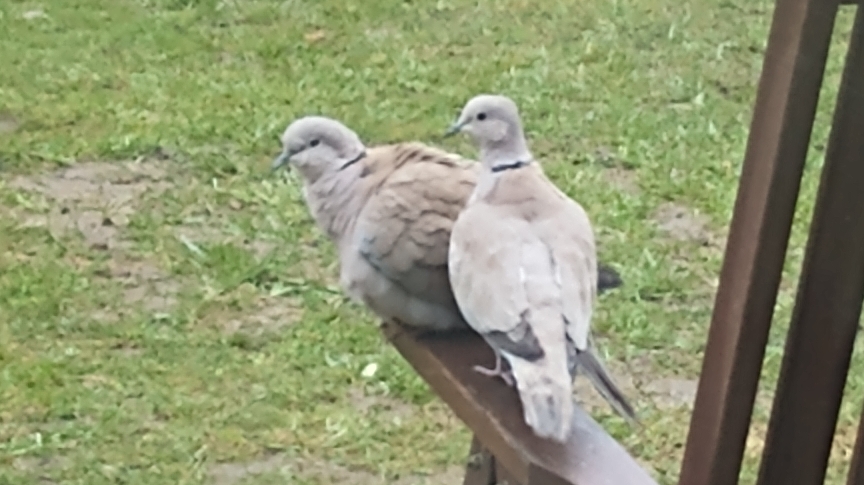
Birds of Prey
Buzzard
Buzzards are more common than you might think in the parish, you can often see them high up in the sky, look for a shallow “V” shape soaring without flapping its wings much.


Kestrel
Well known for hovering above the ground, looking down with its head perfectly still. There’s one often down the road to the farm from Back Lane. Another likely spot is down the footpath that starts next to the pub, and goes south towards church meadow lane. Look right after the first line of trees.

Red Kite
We occasionally see these but not as often as the other birds of prey. Recently one was seen over Back Lane and one was seen over Garrick field.

Ducks and Geese
Mallard
You can normally find a couple on the pond most of the time, however recently the Egyptian Geese seem to have made them move somewhere else.

Moorhen
A family was seen on the pond in 2020 and 2021, and there’s usually one visible most of the time. Look round the edges. They breed on the pond most years so look out for the chicks in spring!

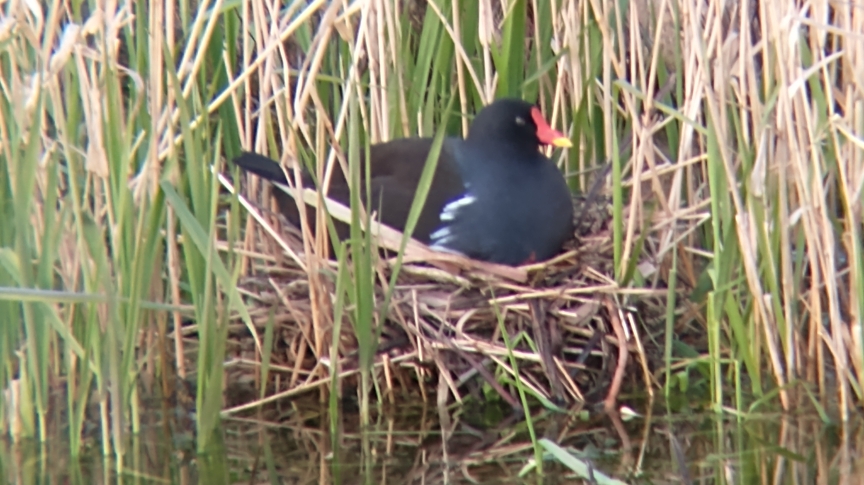
Egyptian Goose
Two were resident at Yelverton pond at the start of 2021, forcing out the mallards it seems. Also seen relatively regularly on the fields near the solar panels, east of Dranes Lane.


More pictures on our post about the impact of the 2020 pond renovation.
Waders
Oystercatcher
Often seen in springtime in the fields near the solar panels and Avenue Farm. Amazing really, as they are coastal birds and we’re not exactly next to the beach. Apparently here they feed on worms rather than their usual seaside diet of muscles and cockles.

More pictures on our post about this sighting.
Game Birds
Pheasant
You can find these stalking around fields mostly, they’ll be easier to see the further away you go from the centre of the village as they are quite shy. Try the fields past the farm to the east, along the public footpath to the cattery. Also to the south around reeders lane, green lane, and dove lane.

Red-legged Partridge
Surprisingly nicely-patterned birds when you see them up close. You can find them in groups of up to 5 or so, on farm fields anywhere round the village.

Gulls
Black-headed Gull
Our smallest gull, and most numerous. In the spring and summer they get their black hood on their head, which they lose the rest of the year just leaving a dark smudge behind the ear.

Lesser Black-backed Gull
The biggest gull that you’ll see in the village, and the only one with a slate-grey back.
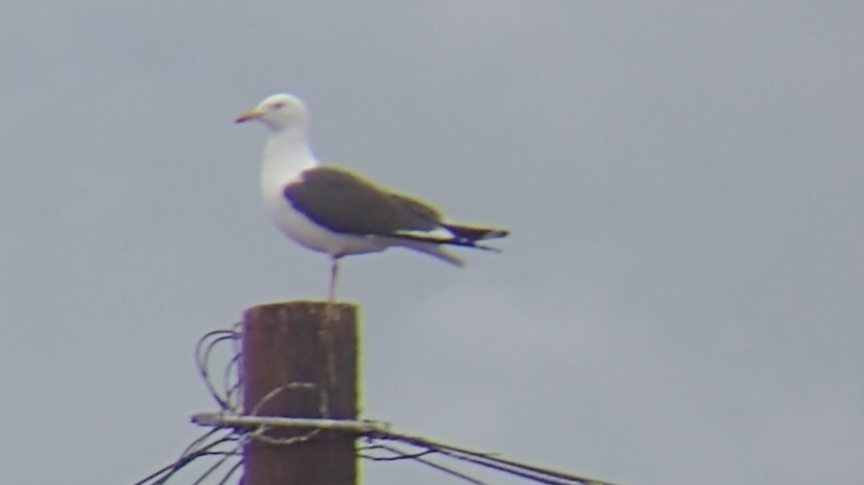
Herring Gull
Unlike the other gulls, these don’t seem to land in the village, we’ve only seen a few in the surrounding fields.
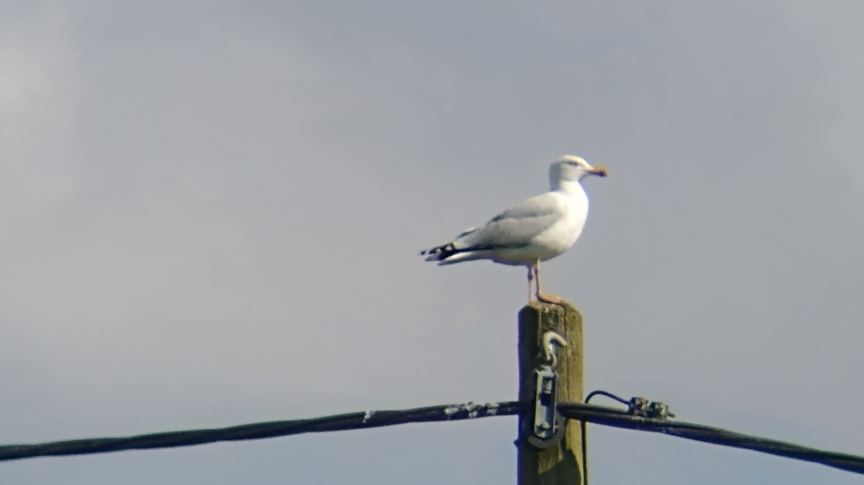
Crows
Rook
One of our most visible birds, you are going to be hard pressed not to see or hear one of these wherever you are. Fundamentally it’s a bird of farmland and grassland where it can feed by probing into the soil with its large beak, so it’s not surprising that we’ve got loads. Huge flocks can descend on any of our fields and can be pretty noisy. There are a few trees that they seem to like, for example the tall tree in the churchyard, one of the larger trees on nichols road, or the large tree located NW of Garrick field. That last one almost always has a few rooks on it, and in spring it is always full of nests being tended to by the adult rooks.


Jackdaw
Extremely common in the village and in the surrounding farmland, where they are often seen with the rooks. They are noticeably smaller though, with a much smaller beak. In the right light they’ve got a grey ‘hood’, but they look all black most of the time. They nest in chimneys in our villages in spring.
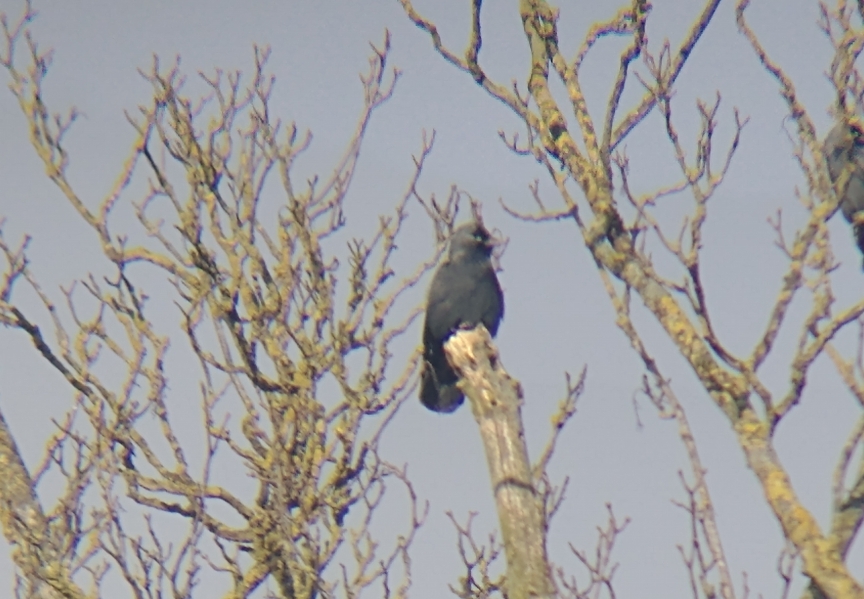
Carrion Crow
Tricky to distinguish from the rooks and jackdaws at distance. Crows do feed on the ground in fields in the same way, and seem less common round here. If it’s not got a long white beak and face, and it’s big like a rook not smaller like a jackdaw, then it’s likely to be a crow.

Magpie
Quite common and instantly recognisable.

Jay
Very shy bird, but possibly seen more in autumn, when they are more visible in general as they are hiding caches of nuts to get them through winter. They have been seen in a few places, including the field at the back of the pond, around Garrick Field, and in farmland to the west of the parish.

Summer Visitors
Chiffchaff
Arriving in Springtime, these have been seen on Yelverton pond, heard in the hedges just behind Avenue Farm, and on the footpaths west of Garrick Field.
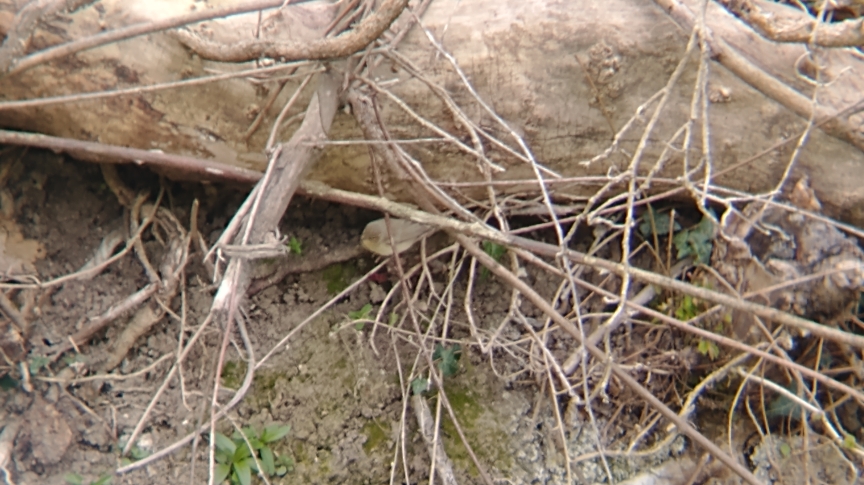
Blackcap
A blackcap has been seen and heard singing in the trees overlooking the village hall playground, and also in the trees along the footpath which goes southwest from the bend in Burgate Lane.
Whitethroat
When these arrive they can be found out of the village around farmland and hedges. We have seen one south of the village near the farmhouses on church meadow lane. Also further south over Well Beck towards Brooke.

House Martin
You can see these in summer flying overhead, for example above the houses on church road and church meadow. They nest under the eaves of our houses.

Swallow
Same as the house martin, they fly around overhead in summer. They’ll line up on telegraph wires at the end of summer, especially around Cherrywood.

Swift
Seen flying over church meadow, church road, and cherrywood.

Winter Visitors
Redwing
Can be seen in the fields around and past the farm to the east of the village, and also around the edges of the big field seen from back lane looking towards the church. They travel west at least as far as the church yard.

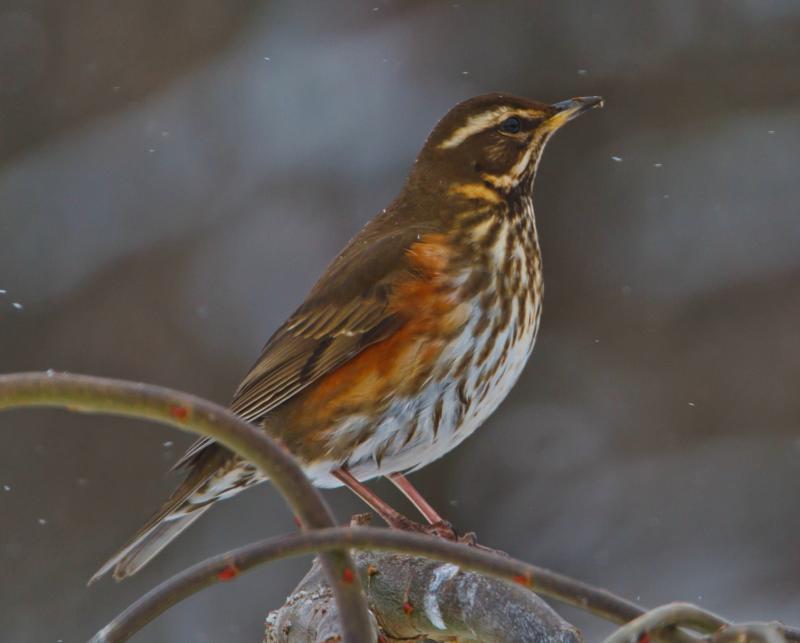
Fieldfare
Fieldfares have been spotted in fields northwest of the pond, but not often. In April 2021 there was a flock of about 100 in the field across the A146 north of the solar panels.
Woodpeckers
Green Woodpecker
These do not turn up often, they spend a lot of time on the ground so you might be lucky and flush one out of the grass. We were amazingly lucky to get the photo as you’d only expect to see one once or twice a year.

Great Spotted Woodpecker
Pretty tricky to spot, but has been seen on the trees down the loke beside the church, to Garrick field.
Rarer sightings
Little Owl
One sighting in the back corner of the horse paddock on Dranes Lane.
Cormorant
One sighting flying over the pond.
Grey Heron
One sighting flying over the church, one over Avenue Farm briefly landing in the pond behind the farm buildings.
Lapwing
A flock of 15 or so seen flying over the church.
Mammals
Its not just birds that can be seen in Alpington and Yelverton, a fair number of other animals can also be seen well, if you can sneak up on them.
Rabbit
You can spot these in pretty much any grassy field, and even around the edge of the pond.

Hare
Seen around the footpath that goes alongside the west side of the solar panels, and in the fields south of Church Meadow Lane.

Deer
We’ve spotted two types of deer in the fields around the parish, the chinese water deer and the reeves muntjac. They are both small, but the muntjac is the only deer to have furry stumps on its head, on which its small antlers grow. Chinese water deer don’t have antlers.

Stoat / Weasel
If you see one it is hard to tell confidently which one of the two it is, they look pretty similar. Whichever one it was, we saw it on the footpath which starts at the top of Dranes Lane heading east across the field, at the crossroads with the private path to the Avenue Farm buildings. It went down into the ditch.
Bat
In particular they’ve been seen flying around the pond at head height, very close by. Also around the churchyard and the loke to Garrick Field.
Grey Squirrel
These characters can often be seen scurrying across branches and up tree trunks.

Hedgehog
Most longer-term residents will have seen a hedgehog or two over the years, at night in their garden or out on an evening walk.
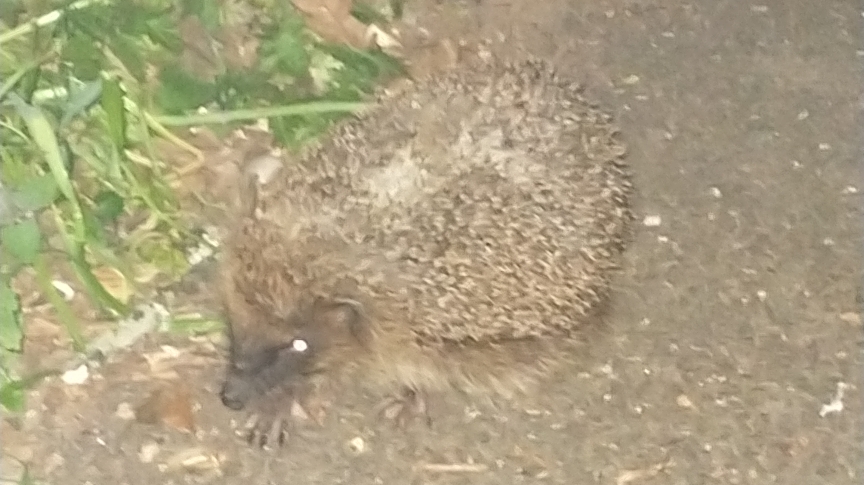
Alpacas
Ok, so these aren’t wild! But still worth seeing. Find them on the field next to the village hall playing field.
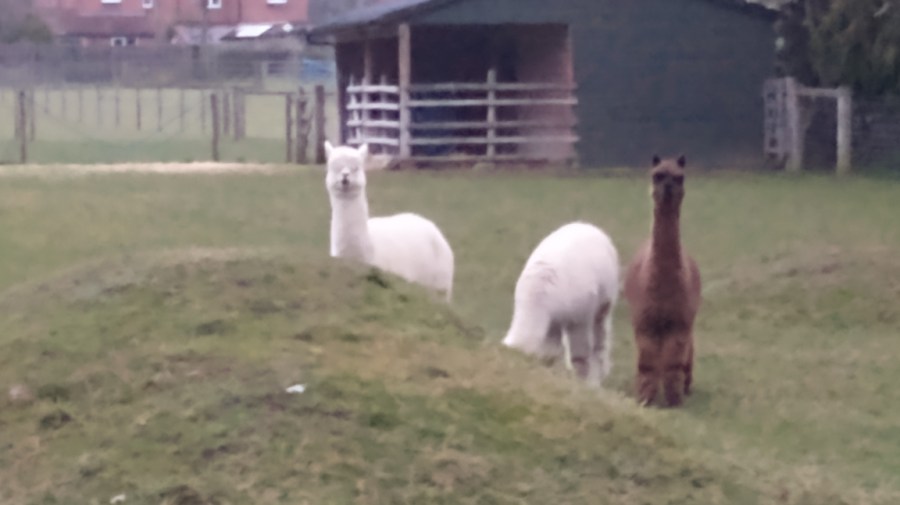
< BACK TO HOMEPAGE < BACK TO VILLAGE GUIDE